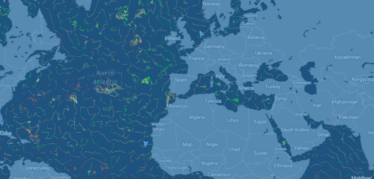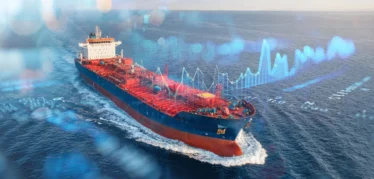Vessel and cargo scheduling is a complex process that relies upon the methodical consideration of a multitude of variables. These variables are always changing—from fluctuating freight rates and availability to voyage itineraries, cargo types, sanction lists, and more. The stakeholders that manage vessel and cargo scheduling are challenged to navigate these nuanced variables while considering exposure, profitability, efficiency, timeliness, and their business’s broader needs. Their ultimate goal? To systematically sort through a vast array of permutations and identify the ‘best-fit’ for their business requirements. Sound complicated? It is.
A seasoned charterer or marine planner is a rare and valuable find. Organizations can maximize the cycles of these valuable individuals by augmenting the complex scheduling process with assisted automation. Voyage scheduling is primed to be a chief beneficiary of the human-machine partnership we see maturing over the next decade. But you won’t have to wait 10 years to harness automation to make the lives of your charterers and marine planners easier; there are solutions you can roll-out today that will revolutionize scheduling workflows within your organization. Here are some of the primary ways that assisted automation can enhance your scheduling process.
1) Considering All Possibilities, At All Times
Through Manual Means
One of the primary challenges for scheduling stakeholders is considering every possible opportunity on an ongoing basis. This is easier said than done, particularly because business needs are always evolving. Production bottlenecks, voyage delays, vessel repairs, new sanctions—these are just a few of the many variables that can impact the consideration set for a scheduler. Sorting through all of this manually, or even using a macro-based approach, is nearly impossible. An approach without automation will always prove less efficient, less timely, and less comprehensive than one that is integrated with real-time business realities.
With Assisted Automation
With assisted automation, scheduling stakeholders can lean on an algorithm-driven scheduling engine that does the grueling and tedious work of parsing through all possible cargo and vessel permutations, considering far more than the individual stakeholder could in a fraction of the time. The best part? This is fully integrated with the business’ operational data, which means that the scheduling engine will account for delays instantaneously without requiring the scheduler to take any action at all.
2) Accounting for Business Objectives
Through Manual Means
The scheduling function’s chief objective can change from one day to the next depending on current business realities. A business may shift its focus from maximizing profitability to meeting all contractual commitments. Or perhaps its focus remains on maximizing profitability, but it wants to understand how laycans met will be impacted if it makes this tradeoff. For the busy scheduler, it can be difficult to systematically prioritize these objectives in stride and quantify the tradeoffs between different approaches.
With Assisted Automation
Conversely, assisted automation enables scheduling stakeholders to clearly define their business objectives, then consider them instantaneously in every single decision. With the push of a button, schedulers can evaluate the tradeoffs between maximizing TCE and laycans met, or they can make a strategic change without slowing down the pace of their mission-critical scheduling process.
3) Making the Best Possible Decisions
Through Manual Means
Identifying the best possible opportunity isn’t always easy. There may be multiple alternatives that each have their own benefits. Perhaps one voyage is best suited to meet business requirements, but another voyage represents a better financial decision. The ability to systematically compare and vet multiple alternatives is core to the success of the scheduling function. Unfortunately, many scheduling stakeholders lack the ability to do so—or at least to do so in a way that is systematic and streamlined.
With Assisted Automation
Assisted automation simplifies decision-making by presenting scheduling stakeholders with best-case configurations in an easy-to-understand format. Schedulers can then compare multiple estimates and take decisive action by saving an estimate, deleting it, or locking it in. To augment the decision-making process, schedulers can also review remarks and cargoes in the same unified workspace. With the ability to readily evaluate viable alternatives, schedulers can lean on their knowledge, insight, and intuition to make the best possible decisions.
Embrace Assisted Automation Today with VIP Schedule Optimizer
As a dynamic platform for the commercial management of marine cargoes and fleets, the Veson IMOS Platform (VIP) provides a suite of flexible tools that key stakeholders on both sides of the marine contract can utilize to make informed and proactive decisions. With an enduring commitment to innovation, Veson has always been focused on applying technology and automation where they are optimized to make the greatest impact on quality of life for maritime shipping’s many stakeholders. That is the impetus behind VIP Schedule Optimizer.
As one of our VIP Industry Solutions, VIP Schedule Optimizer brings the potential of the human-machine partnership to life in your business by complementing VIP’s core chartering workflow with the ability to immediately generate optimized schedules using a dynamic, proprietary algorithm. Learn more about how VIP Schedule Optimizer can change the way you make decisions at the pace of business below.



 Aidan Williams
Aidan Williams
 Antoine Grisay
Antoine Grisay